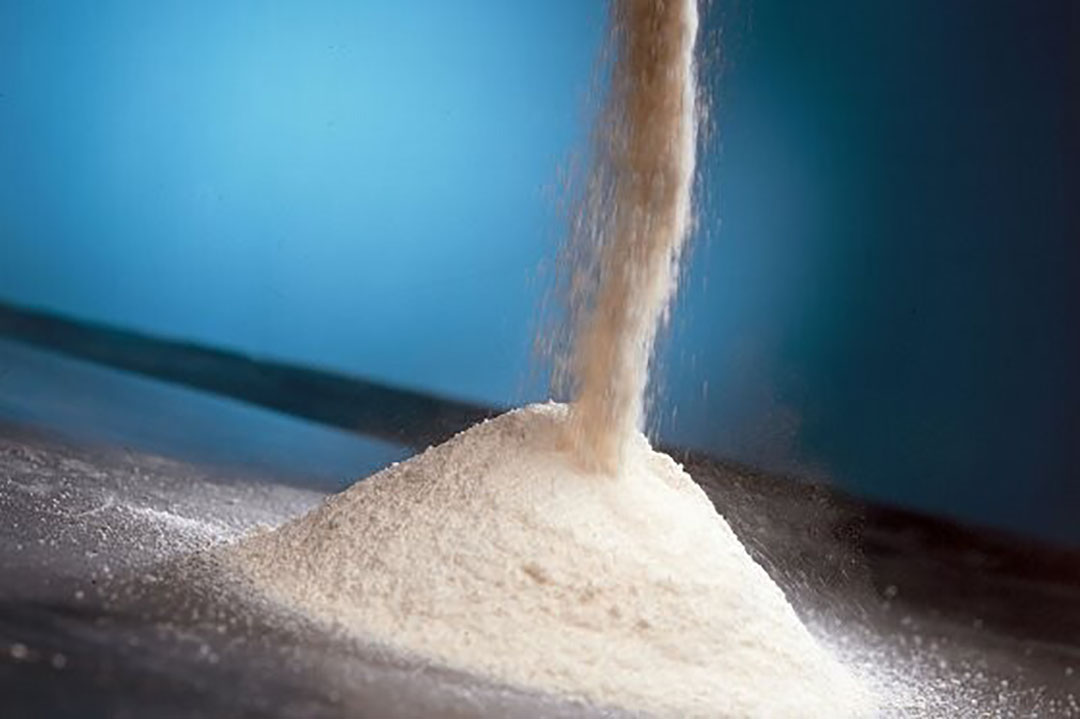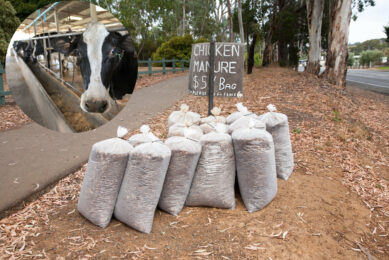Protecting workers from hazardous minerals

In the EU, the European Food Safety Authority (EFSA) evaluates the efficacy and the safety of additives before they can be authorised for use in animal feeds by the European Commission. Safety in relation to the environment, animals and consumers is assessed as well as workers’ safety, which is becoming a crucial consideration.
Hazards for workers are directly linked to the chemical composition of an additive. Therefore, CLP regulation (Regulation UE 1272/2008 on Classification, Labelling and Packaging) requires companies to label their substances appropriately before placing them on the market. The level of risk for workers mainly depends on the dusting potential of the hazardous substances.
In recent years, the European Commission has paid more attention to this parameter and the latest authorisations have even mentioned provisions related to product particle size. In order to prevent workers from inhaling dust from chemical substances, occupational exposure limits (OELs) are defined. These indicate the levels of exposure that are considered to be safe in the air of a workplace at a given time. In the feed industry, trace minerals are the compounds which are the most affected by OELs and the related risks.
Manganese: new exposure limits in force
While manganese did not have specific exposition limits defined at the European level, the EU recently published in the Directive (EU) 2017/164 some OELs for this element, recognised as a neurotoxic. 2 values have been defined: 0.2 mg/m³ for the inhalable fraction – which is breathed in through the nose or mouth – and 0.05 mg/m³ for the respirable fraction – which reaches deep into the lungs. Now, most European countries have integrated these values into their national regulations. Information related to manganese exposure in plants manufacturing premixes and mineral feeds is very limited. In France, where the new OELs for manganese have been implemented since July 2020, a study showed that manganese exposition in 6 feed factories exceeded the thresholds defined in the EU directive in more than 20% of the measurements (206 measurements, INRS 2004). The technological properties of manganese sources which are available on the market vary considerably (Figure 1) and selecting the sources with the lowest dusting potential will be part of the prevention measures used to secure workplaces.
Figure 1

Growing regulatory pressure on cobalt
As all cobalt salts are classified as Carcinogenic, Mutagenic, toxic to Reproduction (CMR) and as skin and respiratory sensitizers, workers’ exposure to cobalt dust also requires specific attention. Workers chronically exposed to cobalt dust are susceptible to developing respiratory problems: diminished pulmonary function, pneumonia, wheezing, et cetera. In recent years, various measures have been adopted to regulate the use of cobalt in the feed sector.
Since 2013, for example, cobalt cannot be used in species for which it is not essential (swine, poultry, dogs and cats). There is still no OEL defined in a European directive, but most countries have established national limits. The value set by the American Conference of Governmental Industrial Hygienists (ACGIH) of 0.02 mg/m³ is the one that is most commonly adopted, and it serves as a reference in the absence of an OEL value. However, stricter operational exposure limits are currently under review in the EU. Following a request from the European Commission, experts from the European Chemicals Agency (ECHA) issued an opinion in March 2020 proposing a limit value of 0.00001 mg/m³, which would be very challenging for the feed industry. Other values are currently being evaluated. A decision is expected in the coming months.
 EU: Sales of veterinary antibiotics dropping
EU: Sales of veterinary antibiotics dropping
A report published by the European Medicines Agency shows a significant decline in the sale of veterinary antibiotics across Europe.
Special case with nanoparticles
Among substances likely to have an impact on workers’ safety due to their strong dusting potential, nanomaterials are a growing concern. Despite a particle size a thousand times smaller than commonly used micro-substances, there are currently no specific regulations concerning the handling of nanomaterials. At first sight, the animal nutrition sector is mainly concerned with certain sources of silica, but the current regulatory framework does not make it possible to identify all products derived from nanotechnologies. Indeed, substances that may have been authorised as additives in a conventional form have since been marketed in a nano form without the need to notify this. Moreover, the lack of a clear definition and well-defined analytical method capable of evaluating tiny particles does not facilitate their classification as a nanomaterial.
Nanoparticles are deposited deep into the lungs in a much higher proportion than micrometric particles (Figure 2) and several studies indicate the greater toxicity of nanosized particles compared to particles of the same chemical nature in micro form. Nanoparticles of copper, for example, induce grave toxicological effects and serious damage in the kidneys, liver and spleen of experimental mice, whereas micro-copper particles do not (study conducted in 2006). Other studies also suggest the possibility of inflammatory, respiratory, cardiovascular or neurological effects. Even if nano applications sound promising, there is a lack of data on toxicity and methods of measuring exposure, which would be needed to establish occupational exposure limit values. It is therefore appropriate to aim for the lowest possible level of exposure, regardless of the operation being carried out.
Figure 2

Nickel in trace minerals soon to be regulated?
Contaminants in feed materials can also be a source of risk for workers. For this reason, nickel is currently under discussion at the European level. Indeed, this heavy metal, which is not yet regulated in feed (as are arsenic, cadmium and lead), can have adverse effects on workers handling contaminated ingredients. In a range of 10 -100 mg/m³ an increased cancer risk has been identified, in particular for the respiratory system, and other health problems have been recorded, including allergic skin reactions. So far, no European directive has defined an OEL for nickel, but in 2011 the Scientific Committee on Occupational Exposure Limits (SCOEL) recommended a limit of 0.005 mg/m³ for respirable dust and 0.03 mg/m³ for inhalable dust. Concentrations of trace minerals can be very high: more than 200 ppm on average. Consequently, with very dusty minerals, exposure of workers to nickel in feed factories could be a concern. This explains why maximum limits for nickel in feed materials are under discussion. In February 2020, the Standing Committee on Plants, Animals, Food and Feed (ScoPAFF) proposed a limit of 200 ppm for trace elements compounds.
Conclusion
Today, more and more regulatory measures are being implemented to secure workers’ safety. This applies in particular to the feed industry where potentially hazardous substances, mainly minerals, are handled in factories on a daily basis. Because dusty products increase the exposure of workers to chemical agents, the European Commission is focusing more on particle size and dusting potential when authorising new feed additives. Employers are also required to regularly monitor the degree to which their workers are exposed to various chemical substances and to minimise this exposure through preventive measures (personal protective equipment, dust extraction systems, etc.). Careful selection of feed additives is essential, and it is important to use products with superior technological properties which are well defined by the supplier.
Authors: Valérie Kromm, Product Manager and Agathe Roméo, R&D Manager, Animine France











